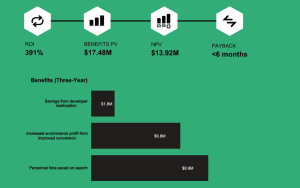
First announced in October 2015, “AMP” stands for Accelerated Mobile Project, and it’s a Google’s project to fast render all web pages for mobile from within Google, like Facebook’s Instant Articles. As Contently.com reports:
As mobile becomes the dominant way that people consume content, AMP is Google’s initiative to speed up the mobile web by allowing links from search results to load directly on Google’s platform. AMP-supported pages will load extremely quickly (median load times are under one second) and consume 10 times less data than normal web pages, according to Digiday.
This might be good news for many webmasters, even bloggers with a small audience that rely on Google, and it might help choose a simpler (and Google-friendly) mobile format than the many available. Indeed, the AMP Project website states that AMP consists of 3 parts:
AMP HTML is HTML with some restrictions for reliable performance and some extensions for building rich content beyond basic HTML.
The AMP JS library ensures the fast rendering of AMP HTML pages.
The Google AMP Cache can be used to serve cached AMP HTML pages.
In other words, it means publishing mobile-optimized content that only uses essential HTML, no fluff, no add-ons and nothing that could slow down page loading, including Java — and it displays within Google’s carousel.
Google’s AMP update is the implementation of a protocol that makes it easy to render web pages fast from Google, and Google seems to be actively encouraging all webmasters to optimize their websites for mobile with AMP.
Does AMP Influence the SERPs?
Google stated that there won’t be currently any ranking benefits for webmasters choosing to implement AMP on their websites, but there is everything to gain in terms of user experience in doing so, as well as advertising (if you use AdSense or other dynamic advertising systems).
As you know, users have been complaining about slow page load for years, and modern web technologies finally make it possible to publish great, nice looking content without affecting usability and accessibility.
So, while AMP is not a ranking factor per se, it is in terms of mobile optimization, faster load speed and user experience, which are ranking factors at Google.
And, of course, you don’t get penalized for not implementing AMP!
Also, AMP is analytics-friendly and it will not interfere with your marketing efforts.
What Should You Do On Your Website
From all the above, it follows that AMP is completely optional to implement, but in the long run your website will definitely benefit from making your mobile users’ life easier.
If you use WordPress, download the AMP plugin or get it via GitHub, install it and follow the instructions. BrandBuilders’ “Google AMP – Hype Or Hope?” post contains a tutorial for the plugin that you may want to read before and after installing the plugin.
If you are doing it manually, make sure to use the AMP validator to check for errors before launching your new mobile version of the site.
Julia McCoy at SmartInsights shares 3 simple tips to adapt your content for AMP, plus more insightful advice to why and how to use AMP.
Are you going to implement AMP on your website?
Digital & Social Articles on Business 2 Community(77)








